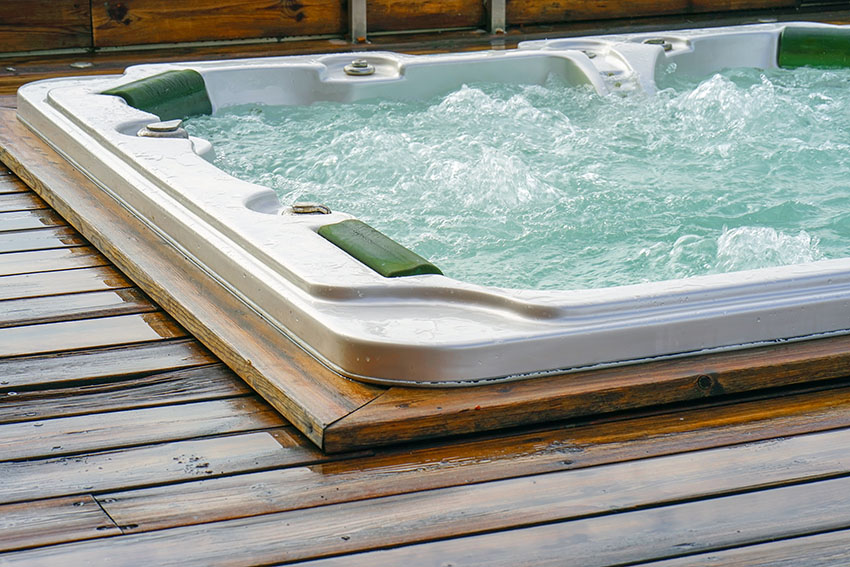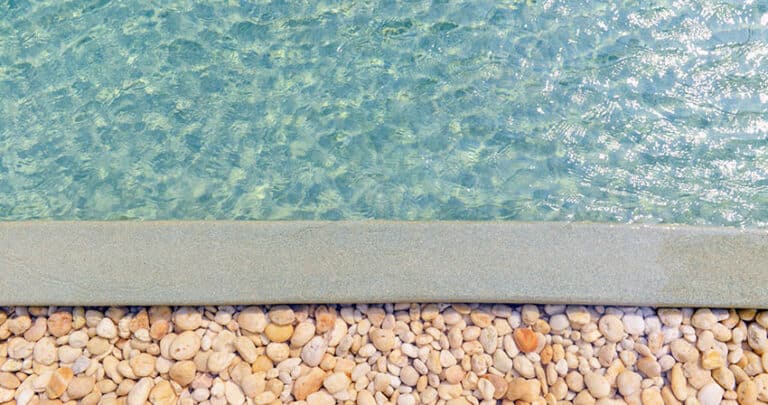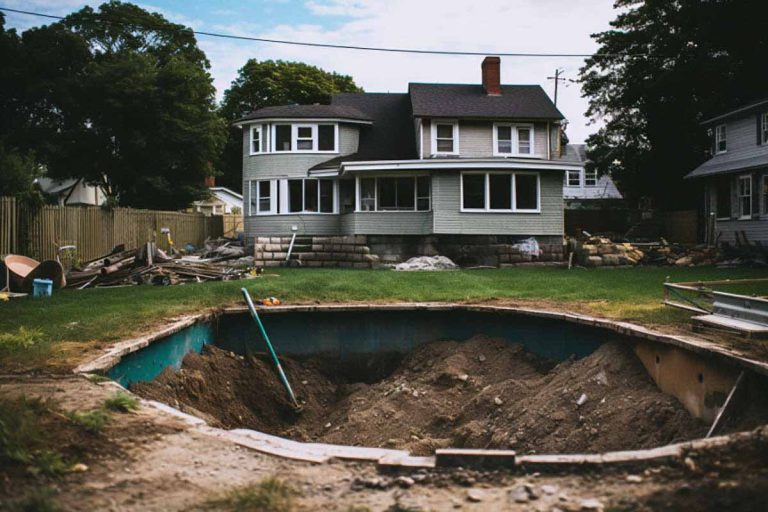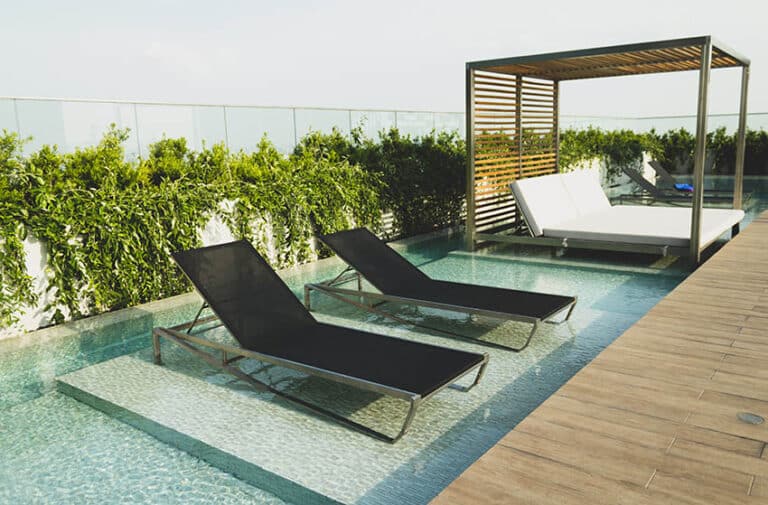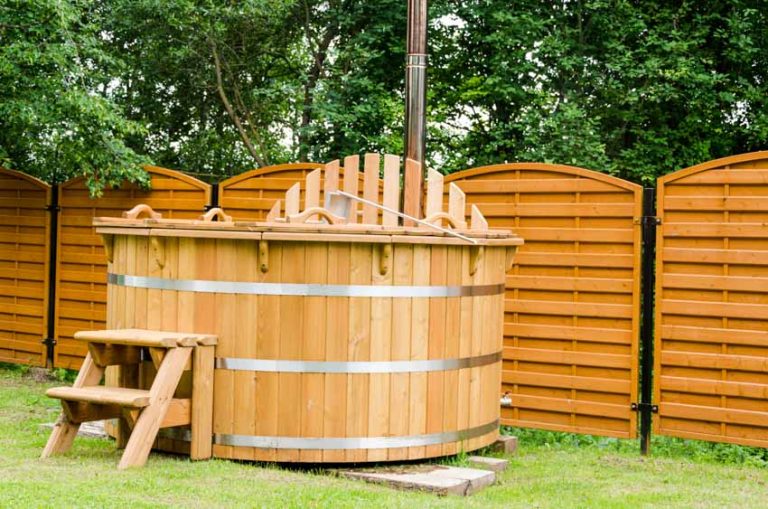Salt Water Hot Tub Pros and Cons
Here are our salt water hot tub pros and cons, including what it is, its benefits, how to maintain saltwater, and how it compares to a chlorine hot tub.

Saltwater hot tubs are rising in popularity due to their many benefits, such as ease of maintenance, gentleness on the skin, and extra buoyancy.
There are also a few drawbacks you should consider before purchasing one. Before we go through the advantages and disadvantages, we’re going to break down exactly how a saltwater hot tub functions.
What Is A Salt Water Hot Tub?

When water of an appropriate salinity is passed through certain precious metals and stimulated by a low level of electricity, the result is a chemical reaction that produces chlorine.
The chlorine then breaks down the molecular structure of pathogens, ensuring the water in your saltwater hot tub is safe for soaking and floating.
Some hot tubs are specially designed for saltwater use. These models have an inline salt chlorine generator located inside the hot tub’s housing.
A traditional chlorine-based hot tub can also be converted to a saltwater hot tub through the use of a drop-in salt chlorine generator, which hangs on the side of the tub.
Some saltwater hot tubs release chlorine automatically on a set schedule, while others use sensors to detect the chlorine levels and respond accordingly.
Pros of Saline Soaking Tubs
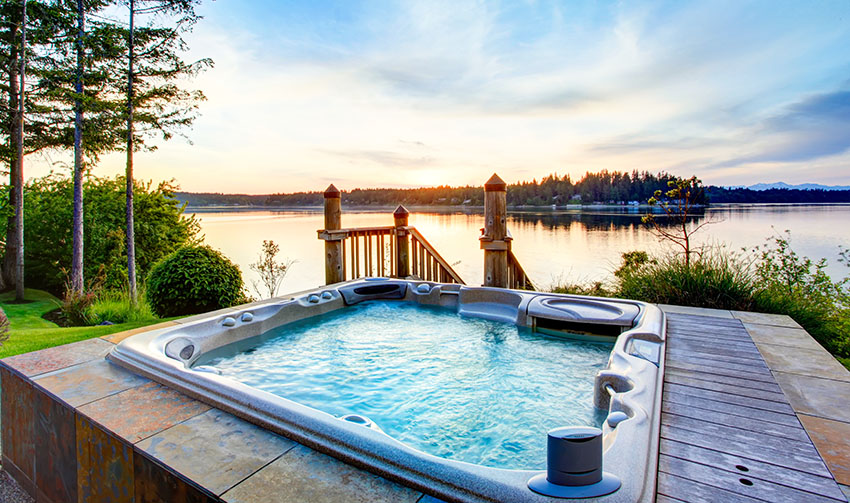
Smells Better Than Chlorine Hot Tubs – The first benefit that most people notice is the lack of an offensive odor. Besides being smell-free, saltwater hot tubs are also much less likely to induce irritation in your eyes, on your skin, or in your airway.
Increased Buoyancy – Inside the hot tub, the saline water provides a pleasant effect of slightly increased buoyancy.
Natural Skin Exfoliant – Saltwater is also a gentle exfoliant with multiple beneficial minerals that restore hydration in the skin and hair.
Lower Maintenance – Saltwater hot tubs are significantly easier to maintain than other kinds of hot tubs. One reason for this is the constant supply and distribution of chlorine thanks to saltwater passing through the salt chlorine generator.
Do Not Need to Be Drained As Frequently As Chlorine Hot Tubs – They do not need to be drained every few months like chlorine models –once a year is adequate. While you do need to perform maintenance to keep the salinity, alkalinity, and pH in balance, you only need to test the chlorine levels once every ten days.
Cons of Seawater Spa Tubs
Before purchasing a saltwater hot tub, it is important to evaluate any potential drawbacks that might affect your use or enjoyment of the hot tub. Compared to other solutions, saltwater hot tubs have very few drawbacks, but there are a few things you should consider.
May Cause Skin Dryness For Those With Skin Sensitivity – While saltwater hot tubs contain much less chlorine than traditional hot tubs, people with acute sensitivities may still notice a slight skin dryness.
Extra Buoyancy May Be Disliked – If you prefer to sit in your hot tub rather than float in it, a saltwater hot tub might not be for you. However, because of the comparatively low salt content of a saltwater hot tub (they are much less salty than seawater, for instance), this is not a major concern for most users.
Slightly More Expensive to Build – More relevant to many people is the cost of a saltwater hot tub. Salt water hot tubs are generally at least $1,500 more expensive than a comparable traditional chlorine model. However, the reduced maintenance obligation and chlorine expense offset this expense somewhat in the long term.
Are Saline Water Therapy Tubs Safe?
Salt water hot tubs are just as safe as any other kind of hot tub. The chlorine produced by a salt chlorine generator effectively destroys bacteria and viruses that may be present in your water, creating a safe and sanitary environment.
Not only that, the lower level of chloramines released into the water makes these tubs much less likely to cause irritant dermatitis. People with sensitive skin who are not able to tolerate traditionally chlorinated hot tubs can often find relief and enjoyment in saltwater hot tubs instead.
Are Seawater Whirlpool Tubs Good for Your Skin?
Yes, saltwater hot tubs are good for your skin. A natural exfoliant, salt water helps renew the surface of your skin by sloughing off dead skin cells. Exposing your scalp to salt water may even decrease the amount of dandruff you experience.
Saltwater contains magnesium, which is naturally antimicrobial and anti-inflammatory. Some eczema sufferers find saltwater hot tubs to be extremely effective at reducing or relieving their symptoms.
How to Maintain a Salt Relaxation Tub
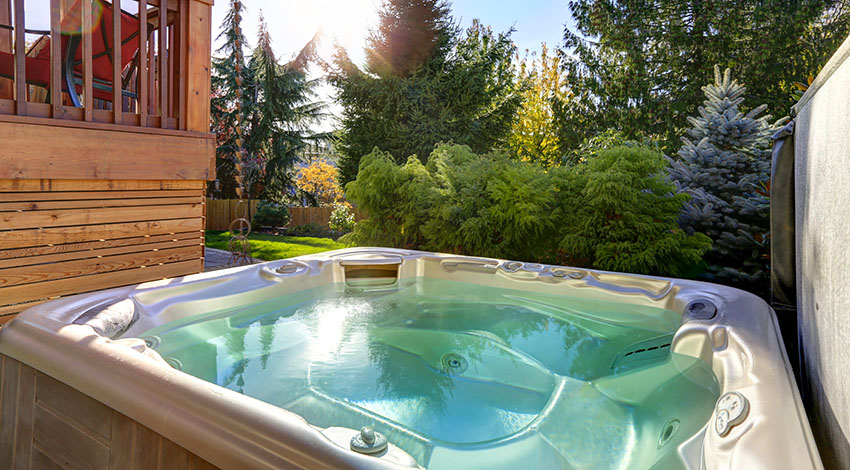
Some models have more than one drainage spigot; this procedure should be repeated until your saltwater tub is completely empty.
Using soft rags to avoid scratching your spa shell, wipe the entire surface with an appropriate cleaner. Appropriate cleaners vary based on the model of your tub and can include diluted bleach, diluted white vinegar, or commercially available spa shell cleaner.
Be sure to check the manufacturer’s recommendations to avoid accidentally damaging your saltwater tub. Leave the hose attached and the ball valve on the drainage spigot open, and rinse off the interior.
When the spa has been drained, cleaned, and rinsed, it is ready to be refilled. Close the drainage spigot and remove the hose. Place one end of the hose in the fill pipe and connect the other end of the hose to a source of fresh water.
Water purity and clarity in saltwater tubs are maintained through the use of salt-filled cartridges that are inserted into an inline salt chlorine generator housed within the body of the spa. Changing the cartridge takes just a few moments and only needs to be performed three or four times per year.
Once a month, you should clean the filters of your saltwater hot tub to make sure it continues to operate as designed. Remove the filter and clean it as specified in the instruction manual. This may involve soaking the filter in a special solution. Rinse and return the filter.
Three times per month, you will need to test the chlorine content of the water using a convenient test strip.
Brine Water vs Chlorine Hydrotherapy Tub
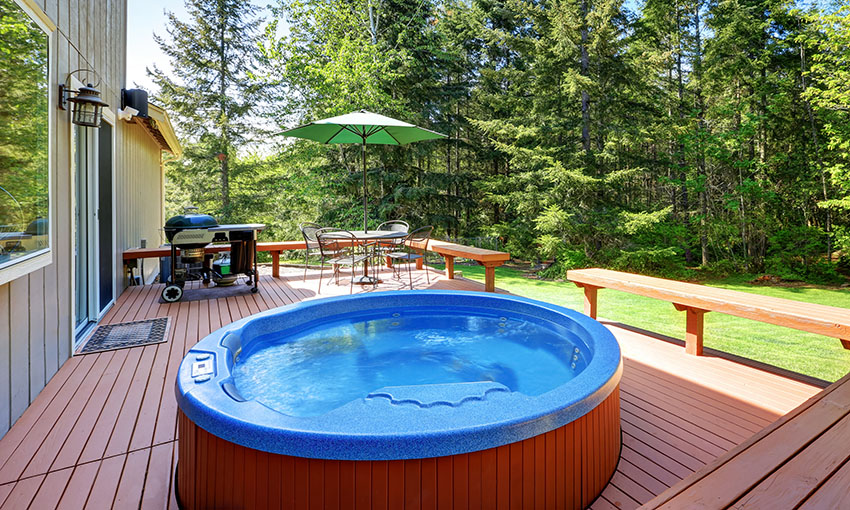
Saltwater and chlorine tubs are both able to purify, filter, and sanitize water. Both types of tubs must be adjusted for pH and alkalinity.
With traditional chlorine hot tubs, chlorine must be added manually, and levels can vary wildly from day to day. This often causes frustration as owners seek to keep chlorination in the recommended range.
When chlorination is too high, traditional chlorine tubs often irritate the skin. When chlorination is too low, it does not adequately sanitize the water. Saltwater tubs release chlorine only when necessary, as informed by a timer or salinity sensors. As a result, the level of chlorination stays significantly more stable.
Traditional chlorine tubs also require higher levels of chlorine than saltwater tubs. The chloramines released by the amount of chlorine required for traditional chlorine tubs are associated with unpleasant odors, irritation to the eyes and breathing passages, and skin irritation. Saltwater tubs are unlikely to cause these negative side effects because they contain much less chlorine.
They only need to be drained, cleaned, and refilled once per year. Compare this requirement to that of traditional chlorine tubs, which must be drained, cleaned, and refilled three to four times over the same period. With this difference, it is easy to see why so many people prefer them to traditional chlorine tubs.
Are Hot Salt-Infused Water Therapeutic Tubs Better?
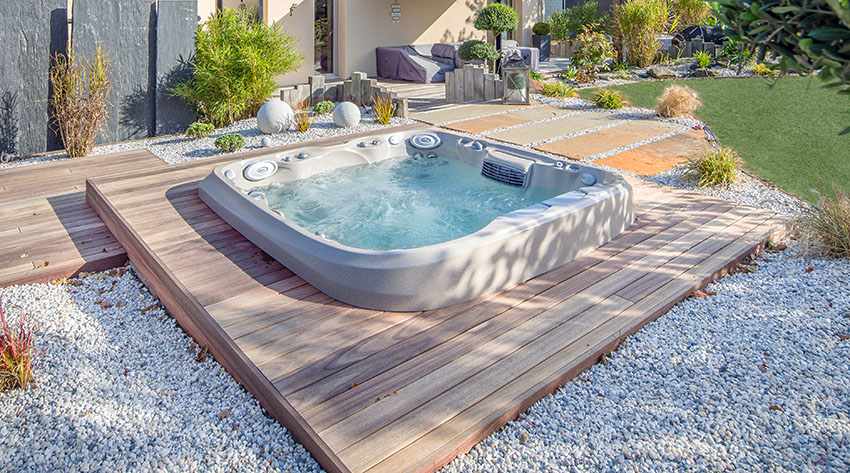
These are also better for individuals with sensitive skin, eyes, or noses, as the reduced level of released chloramines results in less odor and irritation. In fact, a soak in a saltwater tub may help relieve irritation and leave skin and hair feeling soft and refreshed.
The increased buoyancy of salinated water also makes these tubs a better choice for individuals who enjoy floating in their water.
Visit our hot tub sizes guide for more related content.

